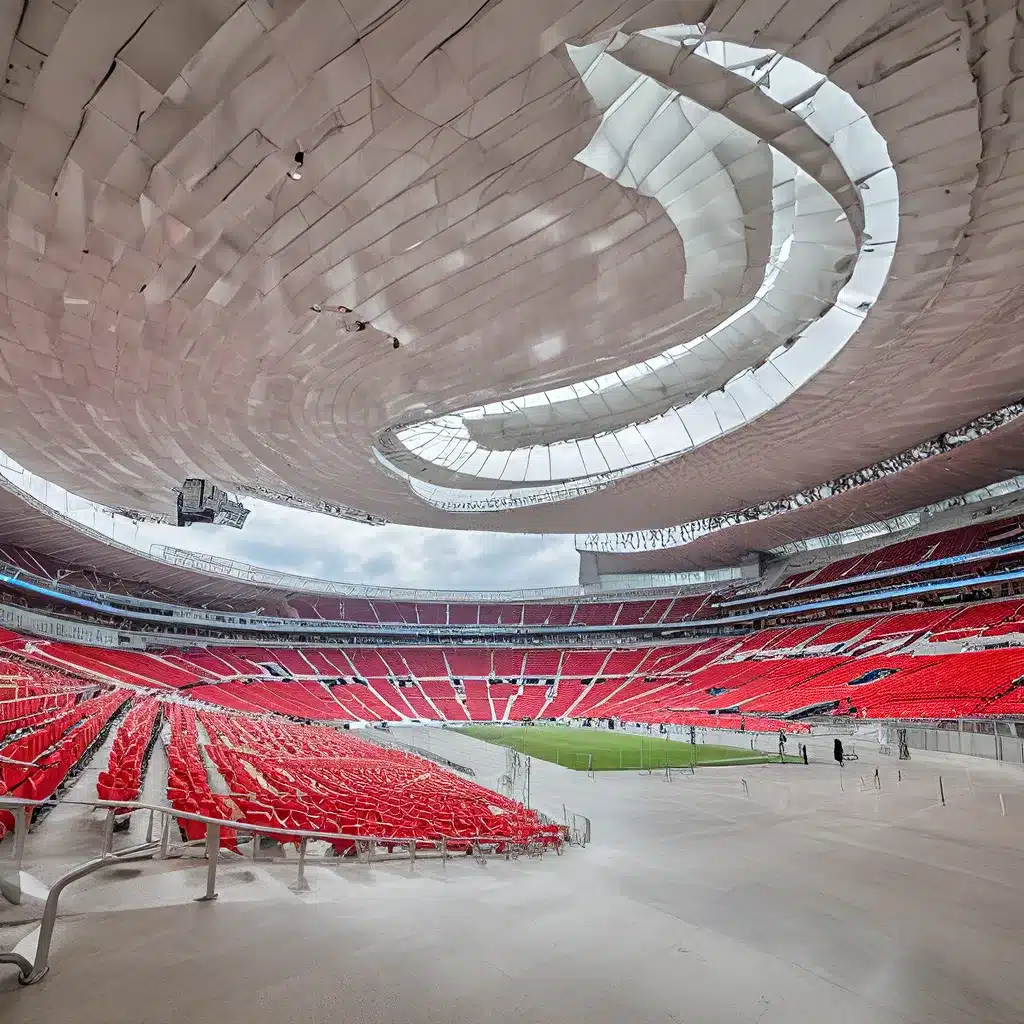
In the heart of Bavaria, amidst a region renowned for its rich cultural and sporting heritage, stands the iconic Allianz Arena, a testament to the architectural prowess that has graced the world of football stadiums. As Munich prepares to host six matches during the 2024 UEFA European Football Championship, this remarkable venue is poised to take center stage, showcasing its innovative design and sustainable initiatives to a global audience.
The Architectural Masterpiece
Opened in 2005, the Allianz Arena is widely regarded as one of the most modern and visually striking football stadiums in the world. Designed by the renowned architecture firm Herzog & de Meuron, the arena is celebrated for its distinctive facade made up of inflated ETFE plastic panels, which can be illuminated in different colors. This feature allows the stadium to change its appearance, reflecting the home team’s colors – red for FC Bayern Munich, blue for TSV 1860 Munich, and white for the German national team.
The stadium’s exterior, often referred to as a “bubble” or “inflatable boat,” is not only an aesthetic triumph but also a functional one. The ETFE panels are highly durable, self-cleaning, and allow natural light to filter through, reducing the need for artificial lighting during the day. This innovative design approach has not only enhanced the visual appeal of the Allianz Arena but also contributed to its sustainability and energy efficiency.
Enhancing the Fan Experience
The Allianz Arena’s design incorporates several innovative features aimed at enhancing the fan experience. The stadium boasts excellent sightlines from all seats, ensuring that every spectator has a clear view of the action on the pitch. Additionally, the acoustics have been meticulously engineered to amplify the crowd’s roar, creating an electrifying atmosphere during matches.
Another notable feature of the Allianz Arena is its flexibility. Originally designed to accommodate both football and American football, the stadium includes retractable seating areas and modular sections that can be adapted for different types of events, making it a versatile venue for concerts and other large-scale gatherings.
Sustainability at the Forefront
Sustainability is a core principle in the design and operation of the Allianz Arena. The stadium employs a range of eco-friendly technologies, including a rainwater collection system that captures and recycles water for pitch irrigation and sanitary facilities. Solar panels installed on the arena’s roof generate renewable energy, while advanced waste management and recycling programs ensure minimal environmental impact. Moreover, the Allianz Arena is well-integrated into Munich’s public transportation network, encouraging fans to use eco-friendly modes of transport, such as the nearby Fröttmaning U-Bahn station, which facilitates easy access to the stadium and reduces the carbon footprint associated with matchday travel.
Beyond the Allianz Arena: Other Architectural Gems in Bavaria
While the Allianz Arena undoubtedly stands as the crown jewel of Bavaria’s football stadiums, the region is home to several other architectural marvels that have contributed to its storied sporting legacy.
The Olympiastadion in Munich, built for the 1972 Summer Olympics, is another architectural gem renowned for its sweeping tent-like roof structure, which was revolutionary at the time. Designed by Günter Behnisch and Frei Otto, the transparent acrylic glass roof creates a unique visual effect and allows natural light to flood the stadium. With a capacity of over 69,000, the Olympiastadion has hosted numerous historic events, including the 1974 FIFA World Cup Final and the 1988 UEFA European Championship Final.
The Max-Morlock-Stadion in Nuremberg, named after the legendary Nuremberg footballer Max Morlock, was built within only two years from 1926 to 1928. This extraordinarily short construction time was the result of a cooperation with the employment office, which provided up to ten thousand unemployed workers from Nuremberg and the surrounding area for earthworks and gardening. The stadium’s octagonal shape and Bauhaus-style architecture are its trademark, and parts of the venue are listed as historical monuments.
Another notable stadium in Bavaria is the Sportpark Ronhof Thomas Sommer in Fürth, one of the oldest football stadiums in the region, having opened in 1910. This historic venue is the home of SpVgg Greuther Fürth, a club with a storied past in German football and the local archrival to 1 FC Nuremberg. Despite its long history, the stadium has undergone numerous renovations to maintain its charm while meeting modern standards, blending traditional elements with modern upgrades.
Conclusion: A Celebration of Architectural Brilliance and Sporting Passion
As Munich prepares to host the 2024 UEFA European Football Championship, the Allianz Arena will undoubtedly take center stage, showcasing its architectural brilliance and sustainable initiatives to a global audience. However, it is worth taking a moment to appreciate the other legendary arenas in Bavaria that have contributed to the region’s storied football legacy.
From the Olympiastadion’s iconic tent-like roof to the Max-Morlock-Stadion’s historic Bauhaus-style architecture and the Sportpark Ronhof Thomas Sommer’s blend of tradition and modernity, these stadiums exemplify the fusion of sport, architecture, and culture that has made Bavaria a true footballing heartland.
As you explore the history and design of these remarkable venues, you will uncover the rich tapestry of stories that have unfolded within their walls, connecting the past with the present and ensuring that the passion for the beautiful game continues to thrive in this remarkable region.

